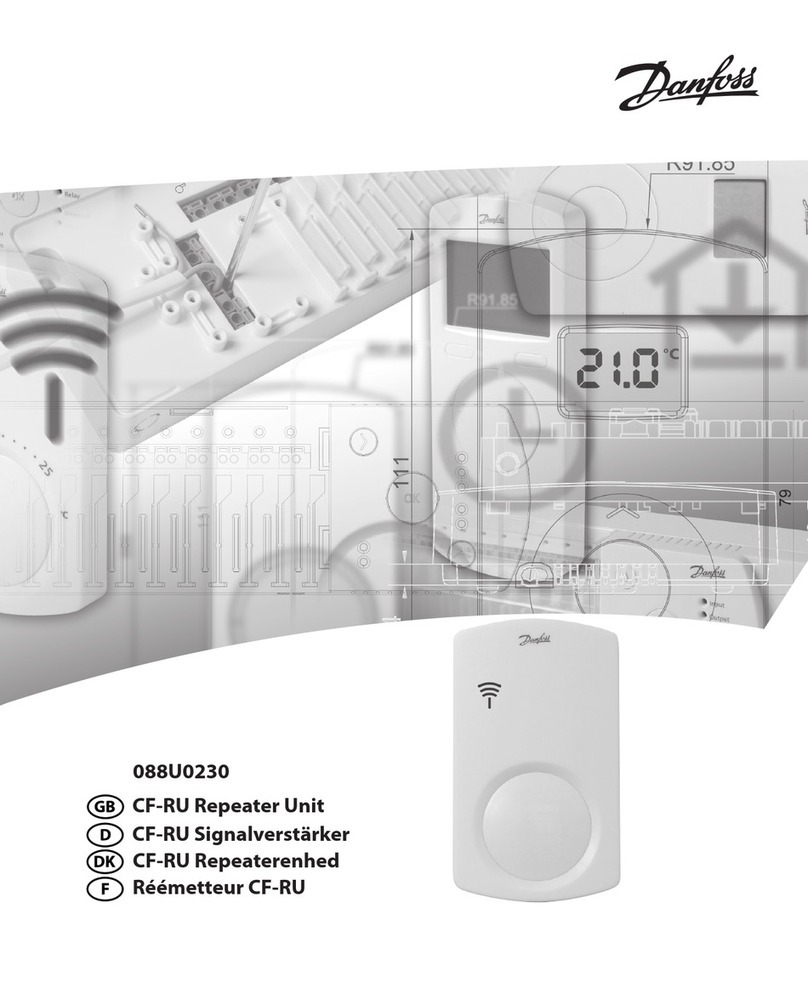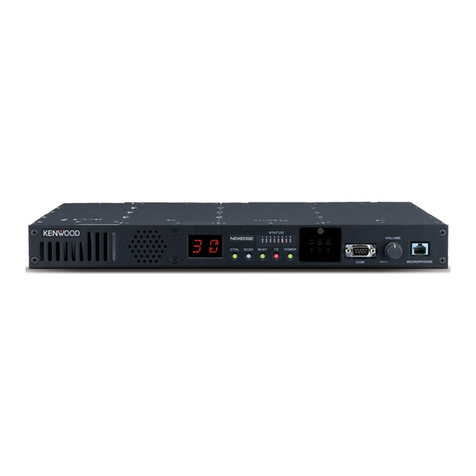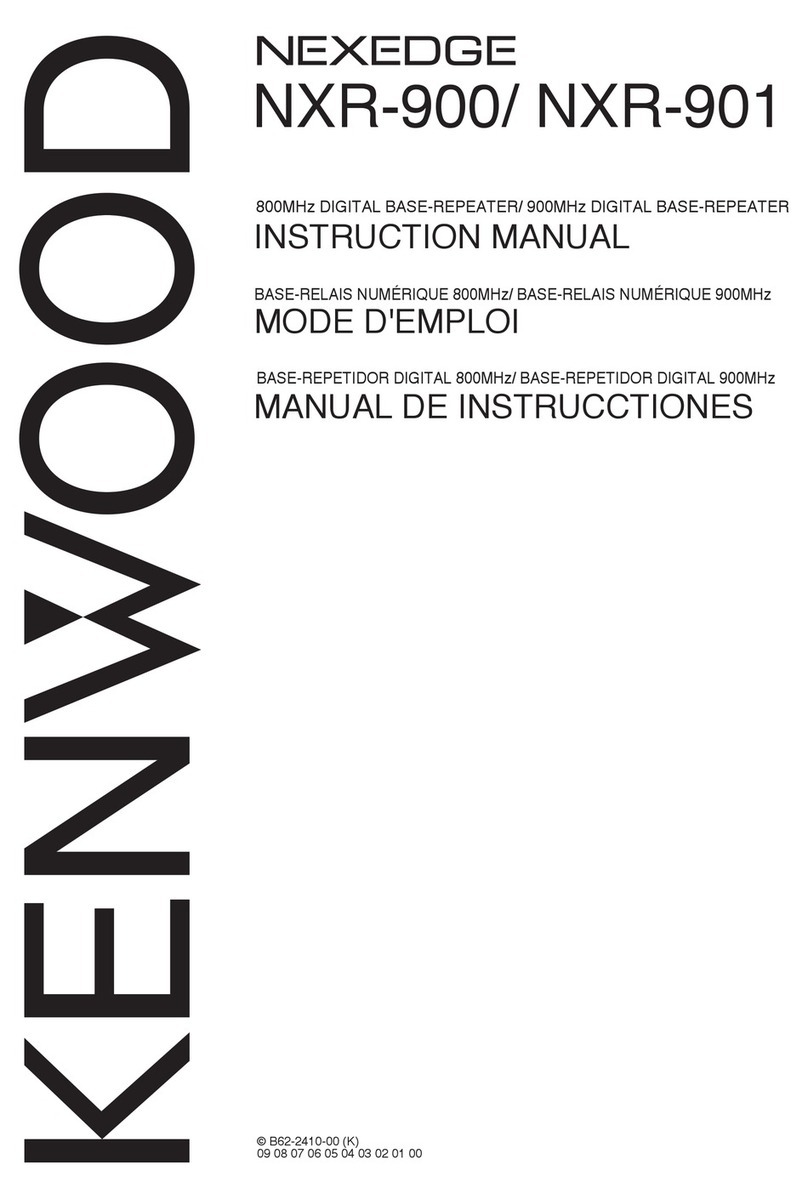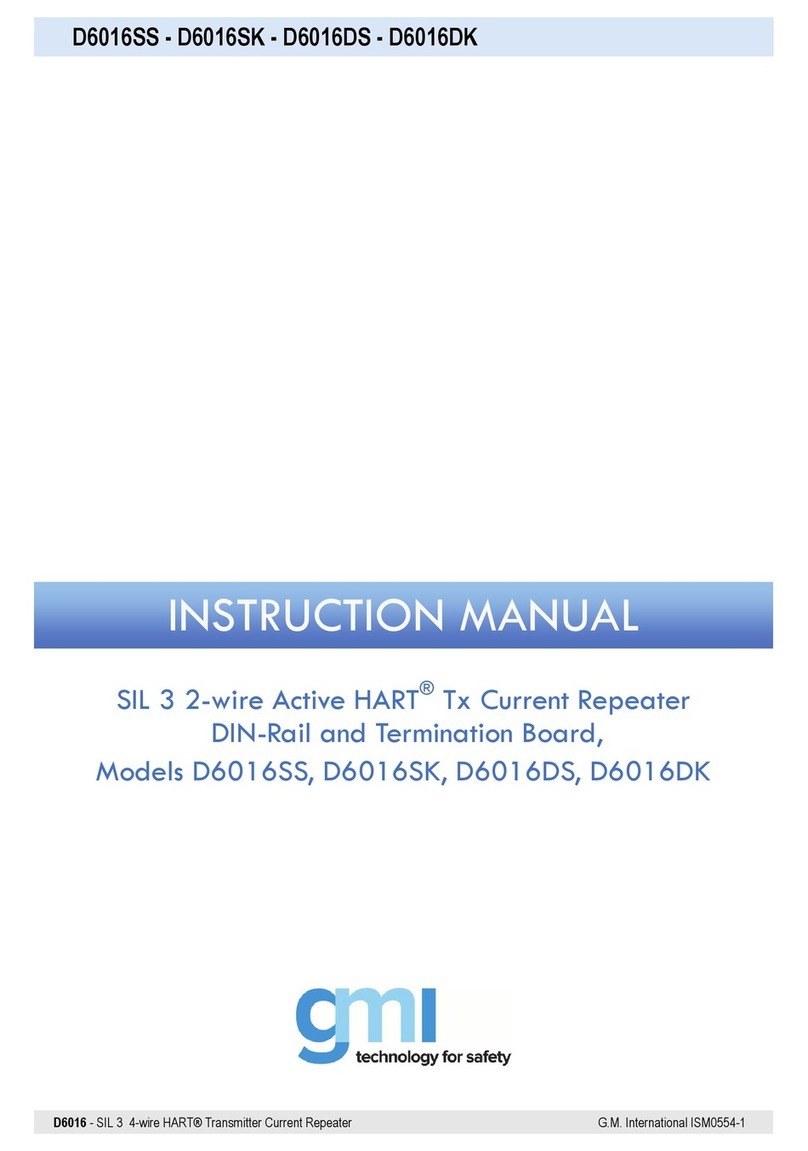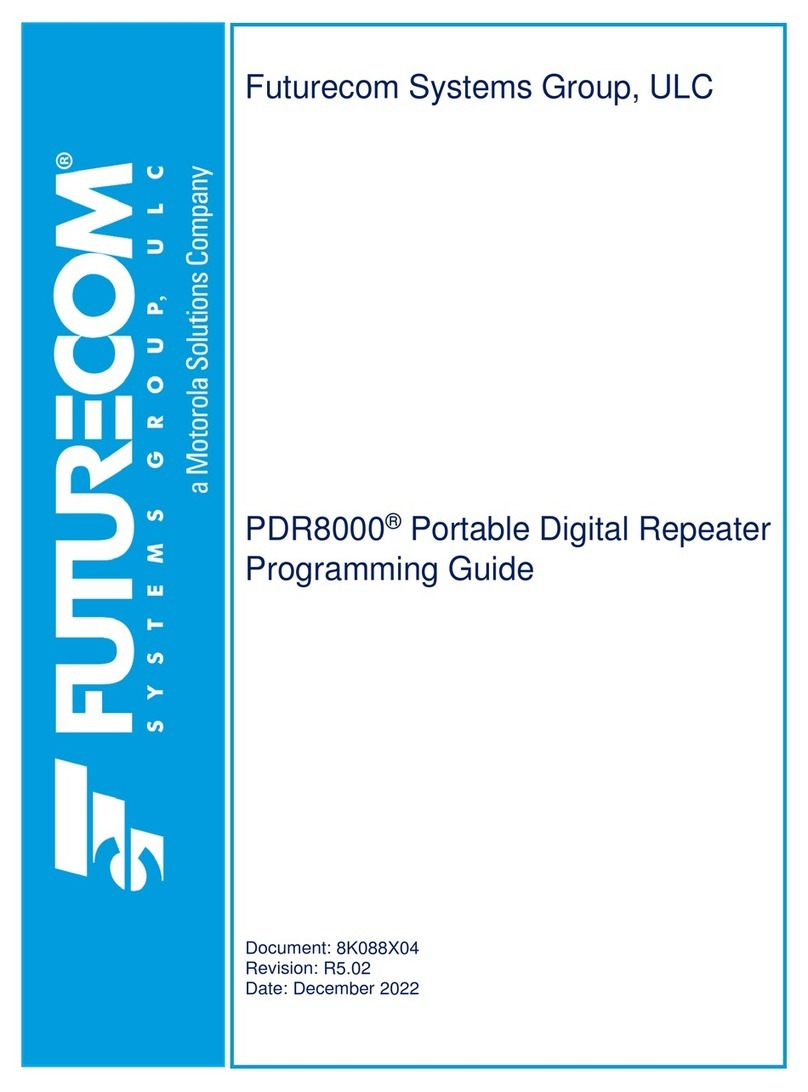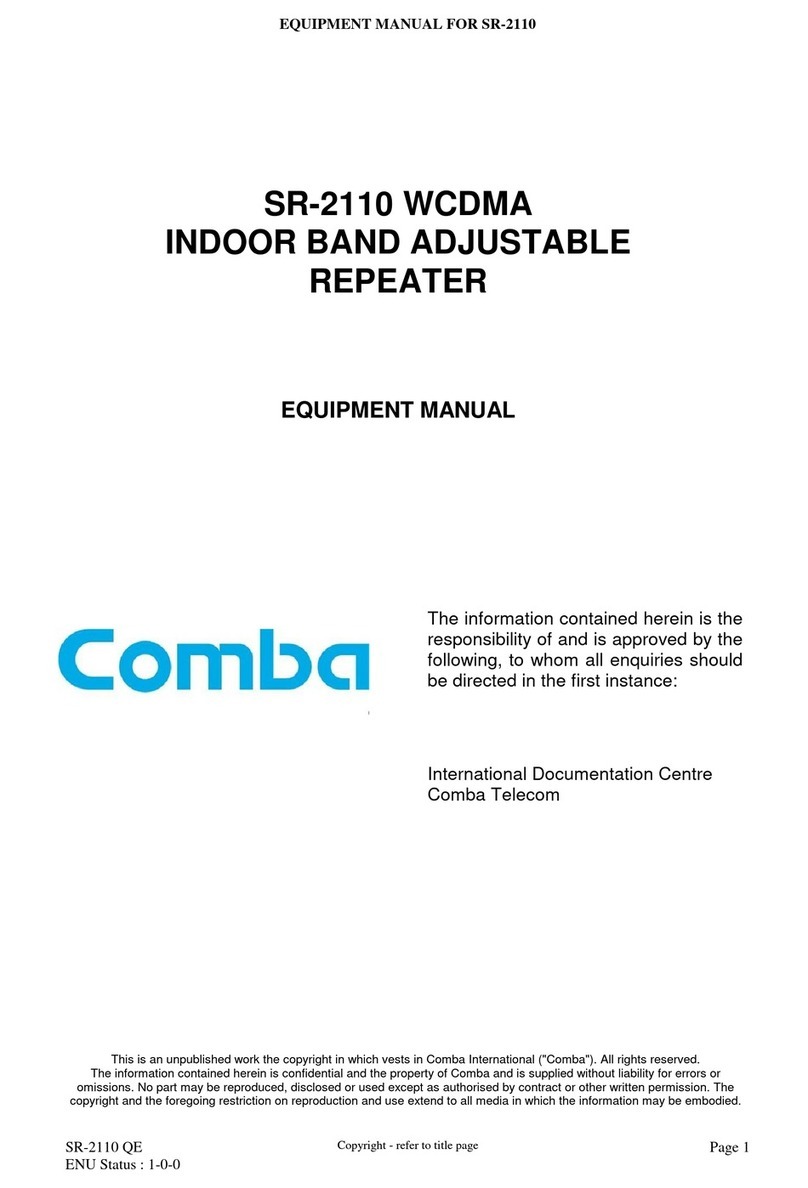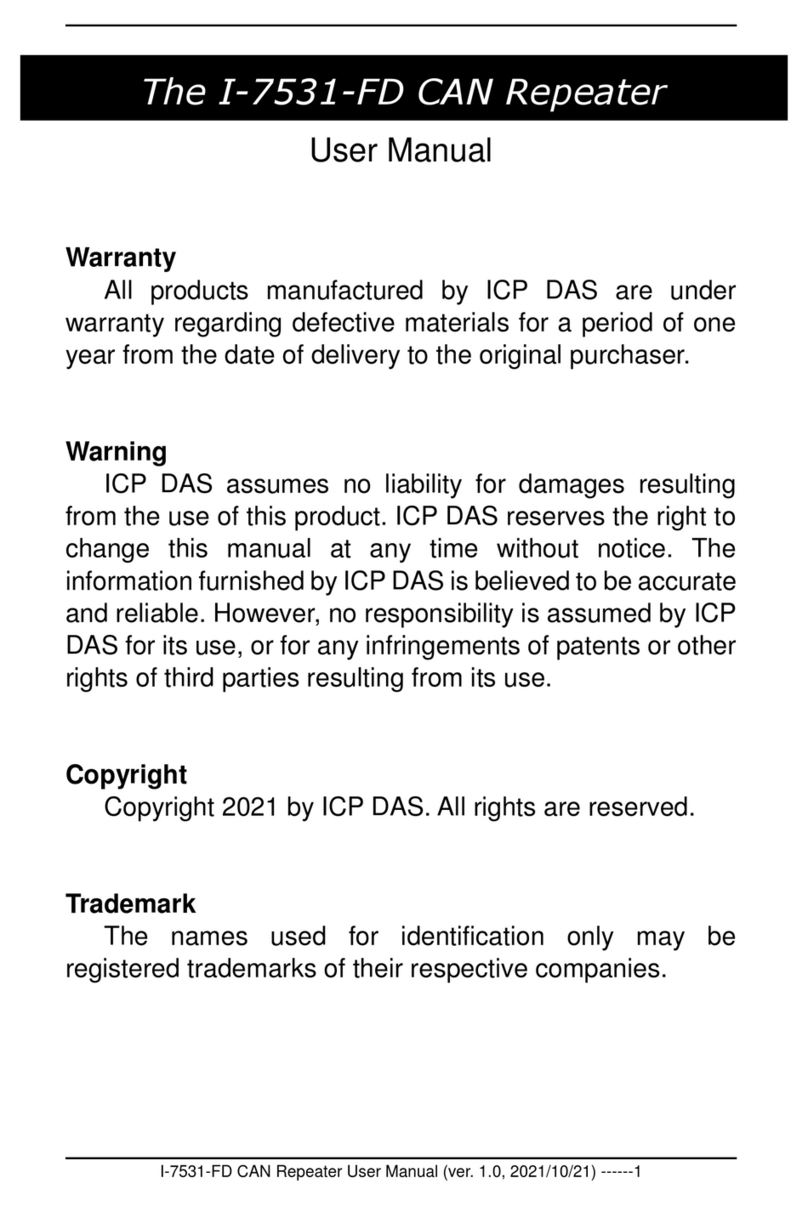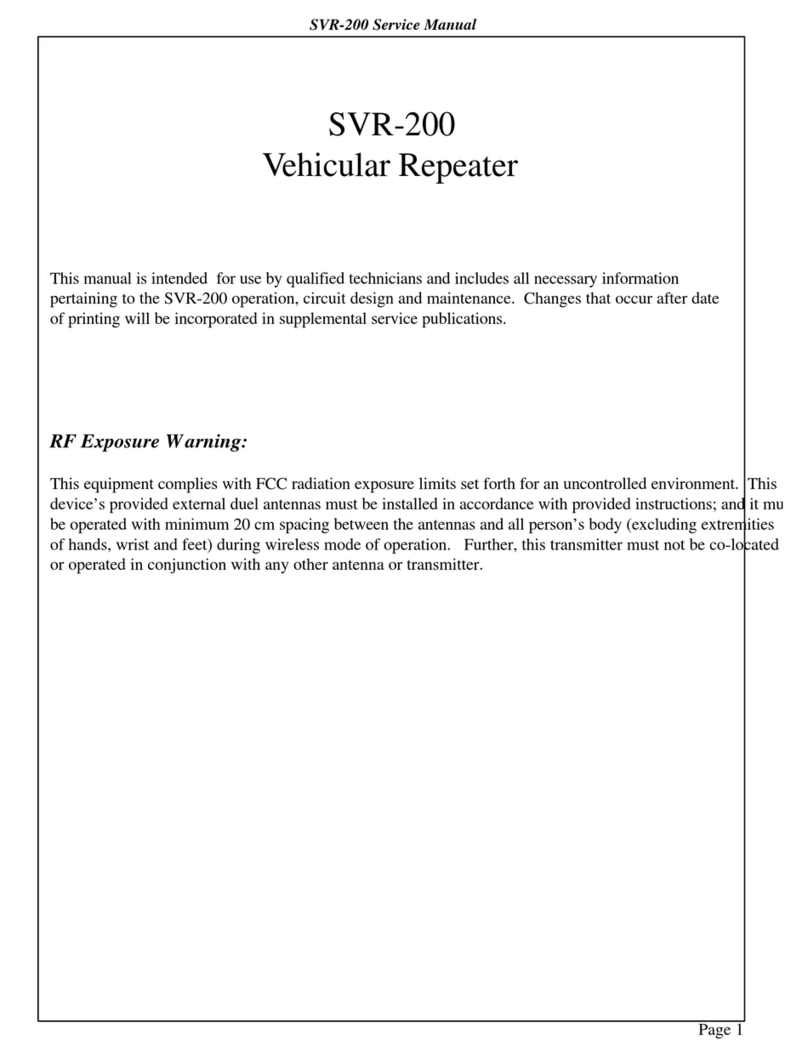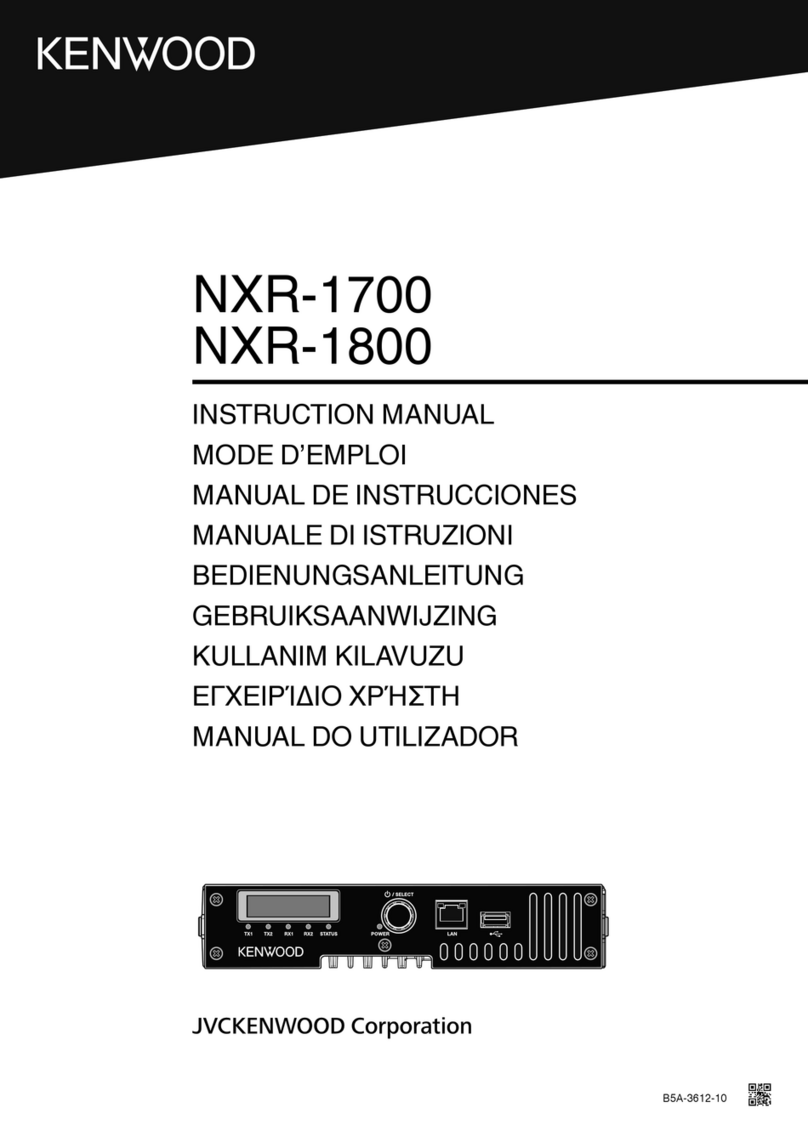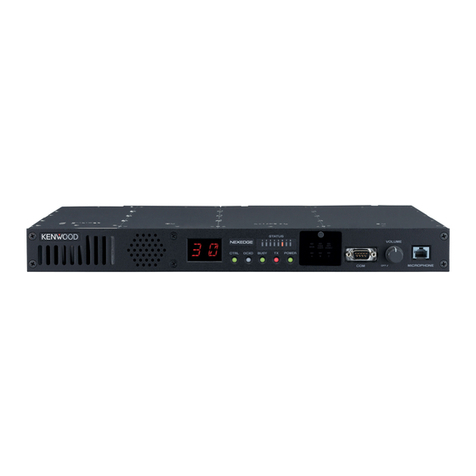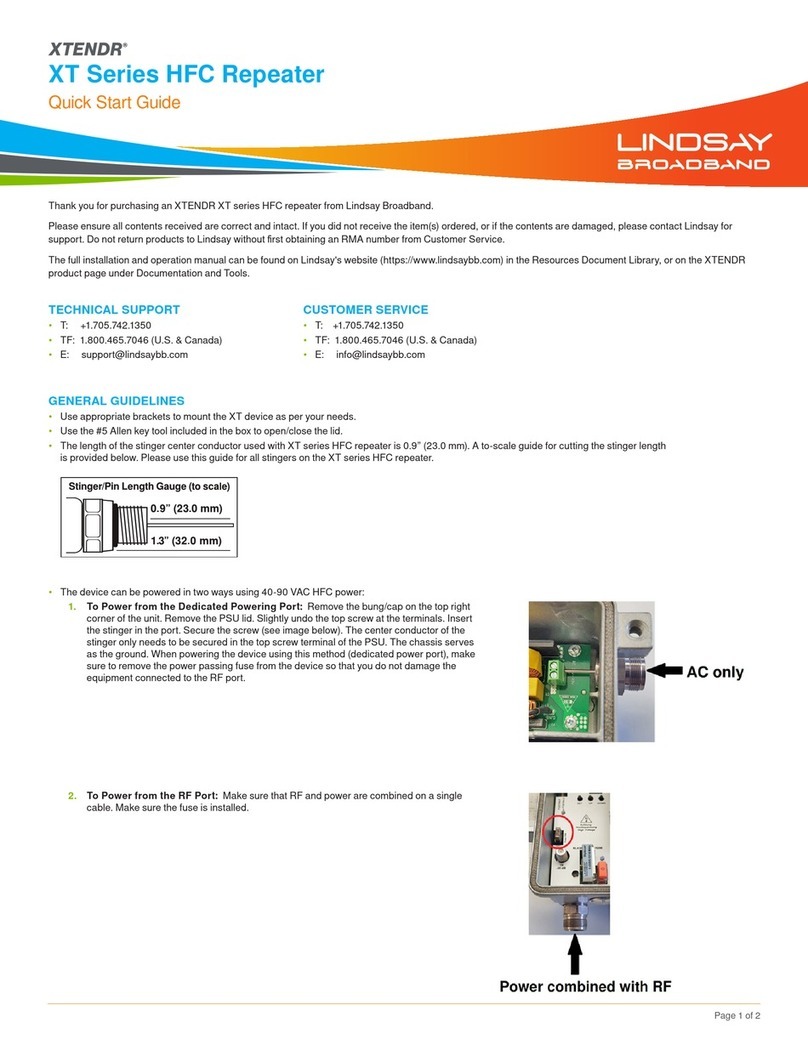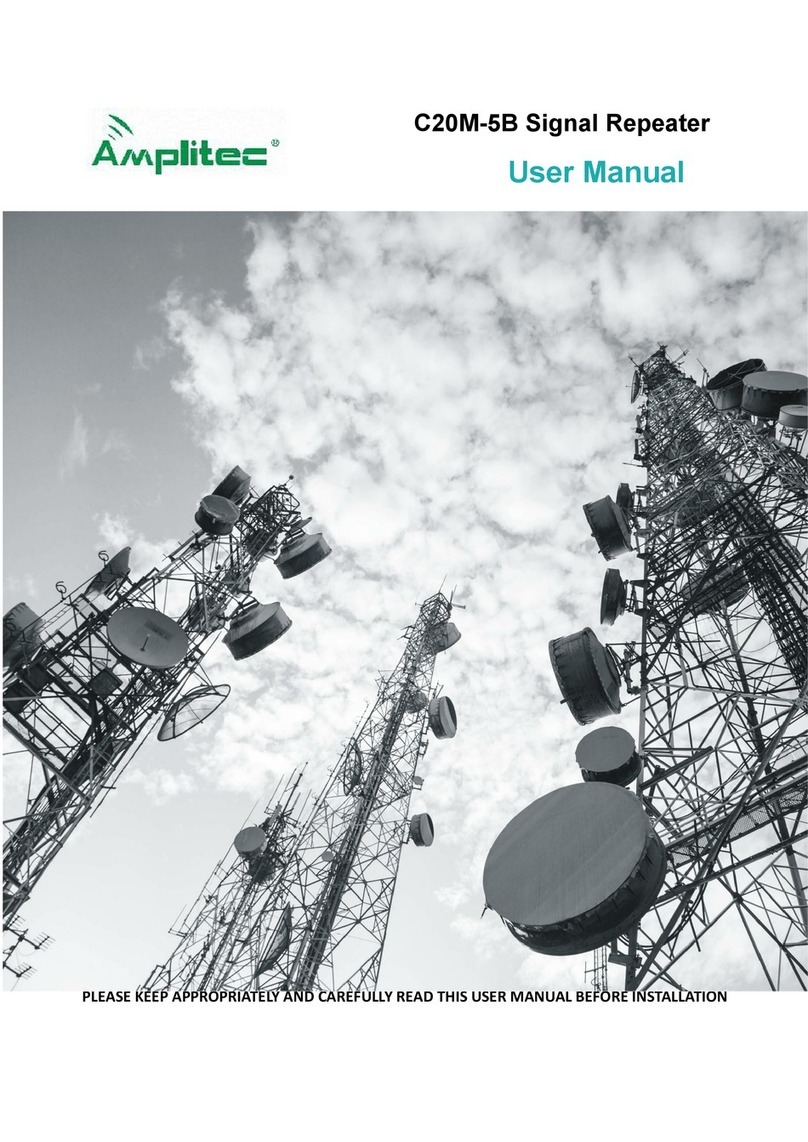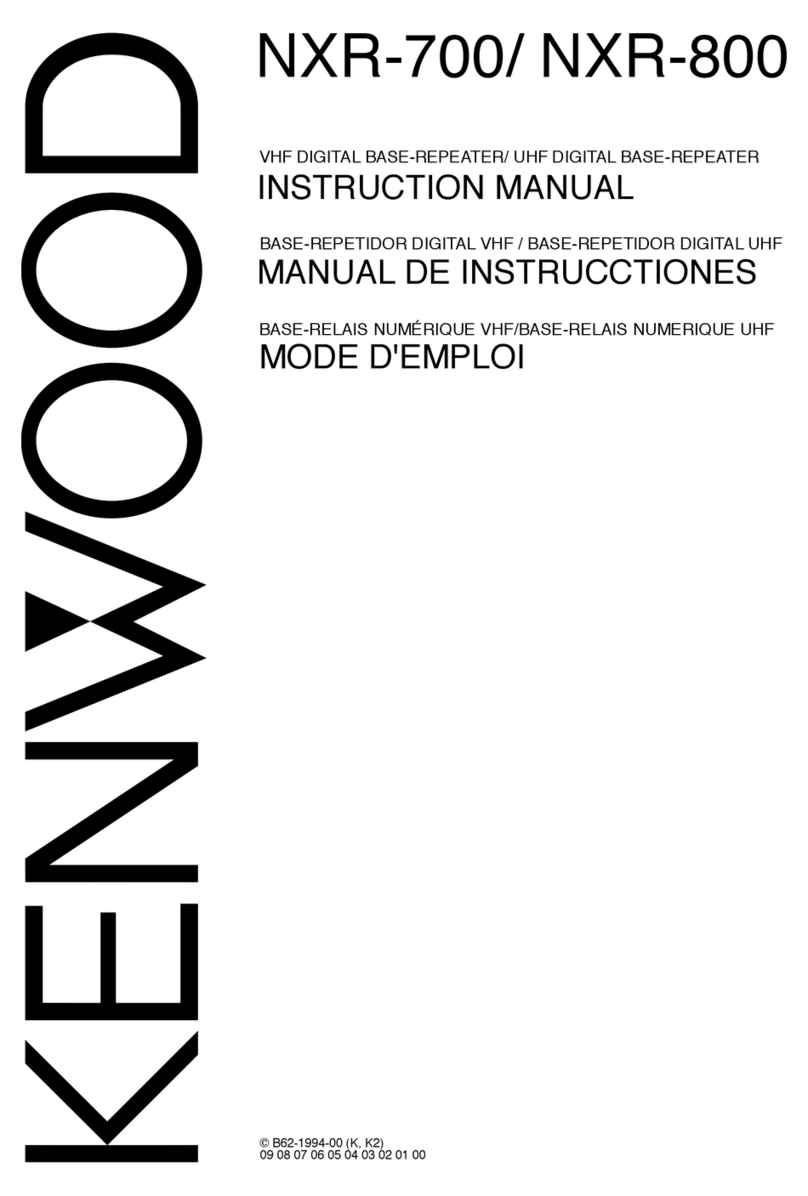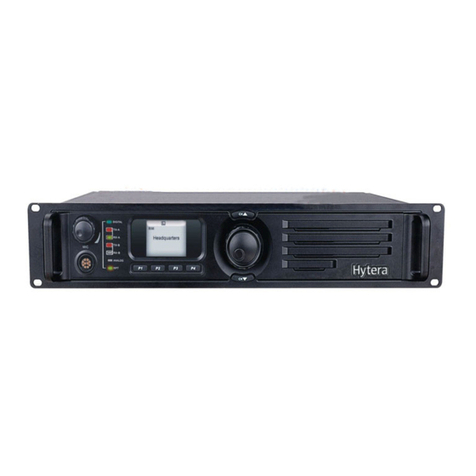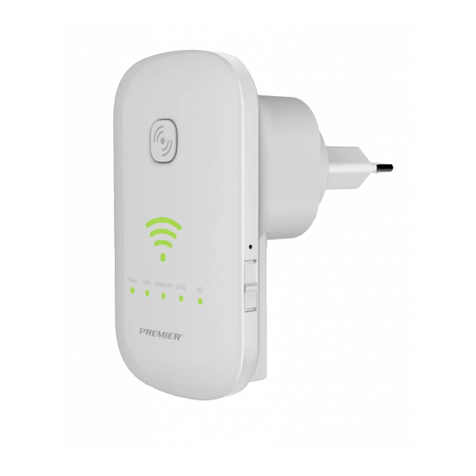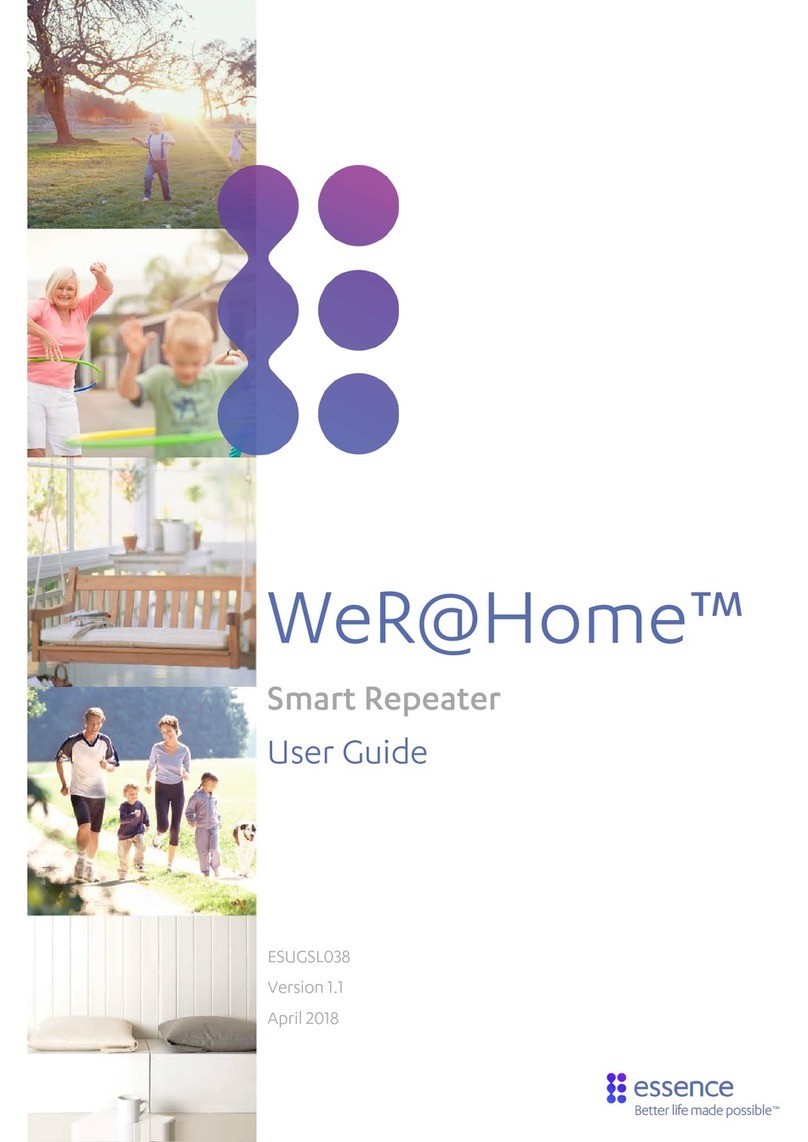Cirronet HN-2010 User manual

HN-2010
Repeater
User’s Guide
5375 Oakbrook Parkway
Norcross, Georgia 30093
www.cirronet.com
+1 678 684-2000


iii
Important Regulatory Information
FCC ID HSW-HN-2010
Maximum Permissible Exposure (MPE) Limits
•Notice to users/installers using the 24 dBi parabolic dish antenna in conjunction
with all Cirronet RF products.
FCC rules limit the use of this antenna, when connected to Cirronet RF products for
point-to-point applications only. It is the responsibility of the installer to ensure that the
system is prohibited from being used in point-to-multipoint applications, omni-directional
applications, and applications where there are multiple co-located intentional radiators
transmitting the same information. Any other mode of operation using this antenna is
forbidden.
•Information to user/installer regarding FCC s Maximum Permissible Exposure
(MPE) limits.
•Notice to users/installers using the following fixed antennas, with Cirronet RF
products:
Andrews 24dBi parabolic dish,
Andrews 18dBi parabolic dish,
Cushcraft 15dBi Yagi,
Mobile Mark 14dBi Corner Reflector,
Mobile Mark 9dBi Corner Reflector
The field strength radiated by any one of these antennas, when connected to Cirronet RF
products, may exceed FCC mandated RF exposure limits. FCC rules require
professional installation of these antennas in such a way that the general public will not
be closer than 2 m from the radiating aperture of any of these antennas. End users of
Note: This unit has been tested and found to comply with the limits for a class A digital
device, pursuant to part 15 of the FCC Rules. These limits are designed to provide
reasonable protection against harmful interference when the equipment is operated in a
commercial environment. This equipment generates, uses, and can radiate radio
frequency energy and, if not installed and used in accordance with the instruction manual,
may cause harmful interference to radio communications. Operation of this equipment in
a residential area is likely to cause harmful interference in which case the user will be
required to correct the interference at their own expense. Commensurate with EIRP limits
specified in FCC Rules 15.247b, this device may not be used with antennas that exceed
36dB of gain in point-to-point applications or 16dB of gain in multi-point applications.

iv
M-2410-0003 Rev. B
these systems must also be informed that RF exposure limits may be exceeded if
personnel come closer than 2 m to the apertures of any of these antennas.
•Notice to users/installers using the following mobile antennas, with Cirronet RF
products:
Mobile Mark 12dBi omni-directional,
Mobile Mark 9dBi omni-directional,
MaxRad 5dBi whip,
Cirronet Patch antenna,
Ace 2dBi dipole,
Mobile Mark 2dBi Stub
The field strength radiated by any one of these antennas, when connected to Cirronet RF
products, may exceed FCC mandated RF exposure limits. FCC rules require professional
installation of these antennas in such a way that the general public will not be closer than
20 cm from the radiating aperture of any of these antennas. End users of these systems
must also be informed that RF exposure limits may be exceeded if personnel come closer
than 20 cm to the apertures of any of these antennas.
European Community Notice
This device complies with ETS 300.328 of the European Community. Operation is
subject to the following conditions:
•This device may not cause interference.
•This device must accept interference, including undesired interference that may
impede the operation of this device.
End of Regulatory Information
Repairs
Cirronet does not recommend field repairs of the radio equipment. Surface
Mount Technology (SMT) has been used in the production of the transceiver
module, which requires specialized training and equipment for proper
servicing. The equipment should be returned to the factory for any repair.
Steps have been taken to insure the accuracy of the contents of this manual. Nevertheless,
Cirronet Incorporated cannot guarantee the accuracy of this manual.
Copyright 2001 Cirronet™ Incorporated
WaveBoltis a trademark of Cirronet Incorporated. Windowsis a registered
trademark of Microsoft Corporation.

v
Table of Contents
Overview...............................................................................................................1
INTRODUCTION .....................................................................................................1
HOPNET PRODUCTS.............................................................................................1
External Antenna ...........................................................................................1
Built-In Antenna .............................................................................................1
Accessories ...................................................................................................1
DESIGN FEATURES ...............................................................................................1
GLOSSARY OF TERMS...........................................................................................2
About HopNet Products ........................................................................................5
INTRODUCTION .....................................................................................................5
OPERATING FREQUENCY.......................................................................................5
HOPNET FREQUENCY HOPPING SPREAD SPECTRUM ADVANTAGES ..........................5
HOPNET DATA INTEGRITY .....................................................................................5
FLEXIBLE POWER MANAGEMENT ...........................................................................5
HN-2010 Repeater................................................................................................7
INTRODUCTION .....................................................................................................7
DESIGN FEATURES ...............................................................................................7
ANTENNA AND POWER CONNECTIONS....................................................................8
RF ANTENNA CONNECTORS..................................................................................8
CONXALL POWER CONNECTOR..............................................................................8
DB-9 CONNECTOR ...............................................................................................8
THREE-WAY SWITCH ............................................................................................8
THREE-WAY SWITCH ............................................................................................9
LED STATUS .......................................................................................................9
POWER..............................................................................................................10
ANTENNA CONNECTORS .....................................................................................10
Configuring the Repeater....................................................................................11
TECHNICAL SPECIFICATIONS ...............................................................................12
General........................................................................................................12
Mechanical...................................................................................................13
Environmental..............................................................................................13
Configuring the Network .....................................................................................15
OVERVIEW .........................................................................................................15
Introduction..................................................................................................15
Five Command Types..................................................................................15
INSTALLING THE WINCOM24 SOFTWARE ..............................................................16
MODEM COMMANDS ...........................................................................................17
SERIAL COMMANDS ............................................................................................18
Set Data Rate Divisor ..................................................................................18
Set Protocol Mode .......................................................................................19
NETWORK COMMANDS........................................................................................20
Set Transceiver Mode..................................................................................20
Set Default Handle.......................................................................................20
Enable Global Network Mode ......................................................................21
Set Hopping Pattern ....................................................................................21
Set Transmit Power .....................................................................................21
Read Receive Signal Strength Indicator (RSSI) ..........................................21

vi
M-2410-0003 Rev. B
Set Range Optimization...............................................................................22
PROTOCOL COMMANDS ......................................................................................23
Set Alternative Frequency Band ..................................................................24
Set Hop Duration .........................................................................................24
Set Minimum Data Length ...........................................................................24
Get Maximum Data Length (read only)........................................................24
Set Maximum Number of Remotes (base only) ...........................................25
Set Packet Attempts Limit............................................................................25
Set Data Transmit Delay..............................................................................25
Set Slot Assignment Mode (base station only) ............................................25
Set Base Slot Size (base station only).........................................................26
Set ARQ Mode.............................................................................................26
STATUS COMMANDS ...........................................................................................27
Banner Display Disable ...............................................................................27
Set Escape Sequence Mode .......................................................................27
Read Factory Serial Number High, Middle and Low Bytes. .........................28
Set Duty Cycle .............................................................................................28
Enable Low Power Acquisition Mode...........................................................28
MEMORY COMMANDS .........................................................................................29
Recall Factory Defaults................................................................................29
Recall Memory.............................................................................................29
Store Memory ..............................................................................................29
MODEM COMMAND SUMMARY .............................................................................30
GUIDELINES FOR INSTALLATION ...........................................................................31
GUIDELINES FOR PLACING THE REPEATER............................................................31
Typical HopNet Applications ...............................................................................33
INTRODUCTION ...................................................................................................33
POINT TO MULTIPOINT ........................................................................................33
Troubleshooting ..................................................................................................34
OVERVIEW .........................................................................................................34
Introduction..................................................................................................34
Transceiver Requirements...........................................................................34
COMMON SYSTEM PROBLEMS .............................................................................35
GUIDELINES FOR REDUCING INTERFERENCE .........................................................36
Introduction..................................................................................................36
Guidelines for Setting Up the Network.........................................................36
Guidelines for Selecting Your Site ...............................................................36
GUIDELINES FOR AVOIDING TERRAIN OBSTRUCTIONS............................................37
CUSTOMER SUPPORT .........................................................................................38
Introduction..................................................................................................38
Technical Assistance ...................................................................................38
Factory Repairs ...........................................................................................38
Warranty .............................................................................................................39
Notes: .................................................................................................................40

Overview
M-2410-0011, Rev - HopNet Family of Products 1
Overview
Introduction
The HopNet 10 Series family of products provides reliable wireless connectivity for
either point-to-point or point-to-multipoint applications. The HopNet products are
built around the WIT2410 radio transceiver, which employs frequency hopping
spread spectrum technology. This technology ensures:
•Maximum resistance to noise
•Maximum resistance to multipath fading
•Robustness in the presence of interfering signals
HopNet Products
The HopNet family of products is built with rugged enclosures compliant with IP 66
and NEMA 4X standards for outdoor and harsh industrial environments. All Hopnet
products work with each other and can be mixed and matched in a single network. All
HopNet Products are WIT2410 compatible and can be used with the WIT2410 OEM
based products as well as with the SNAP2410 10Base T access point. The HopNet
family consists of the following products:
External Antenna
HN-210X Base/Remote Unit
HN-510 Indoor Base/Remote Station
HN-1010 Outdoor Base/Remote Station
HN-1510 Indoor Base/Remote Station
HN-2010 Repeater
Built-In Antenna
HN-210 Base/Remote Unit
HN-3010 Base/Remote Unit
Accessories
Antennas
Adapter
Power Supplies
Design Features
The HopNet modems have many advanced features:

Overview
2 HopNet Family of Products M-2410-0011, Rev -
•Employ frequency hopping technology with up to 75 channels in the 2401 to 2475
MHz frequency range
•Support RS-232 and RS 485 interfaces (HN-210 and HN-510 are RS-232 only)
•Support digital addressing for up to 64 networks, with 62 remotes per network.
•Use transparent ARQ protocol
•Use same hardware for all supported data rates
•Supports up to 230 Kbps asynchronous data rates
•Full Duplex
•Stores setup configuration in nonvolatile memory (FLASH)
•Provide fast acquisition – less than 2 seconds is the typical time to acquire hopping
pattern
•Use smart power management features
Glossary of Terms
Refer to the following list of terms that may be unfamiliar to you. These terms are
used throughout this document.
Term Definition
ARQ Automatic Repeat Request. The operation in which the radio
will re-send the data until it is received correctly.
bps Bits-per-second. A measure of information transfer rate of
digital data across a channel.
Decibel A measure of the ratio between two signal levels. Used to
express either loss or gain.
dBi Decibels referenced to an ideal isotropic radiator in free space.
Used to express antenna gain.
dBm Decibels referenced to 1 milliwatt. An absolute unit used to
measure signal power. Transmitter power output or received
signal strength.
DCE Data Communications Equipment. A device that receives data in
the form of digital signals at its input. The modem side of a
computer-to-modem connection.
DCD Data Carrier Detect.
DTE Data Terminal Equipment. A device that provides data in the
form of digital signals at its output. The computer side of a
computer-to-modem connection.
EIRP Effective Isotropic Radiated Power.
ISM Industrial, Scientific, or Medical band operating at 2.4 GHz.
Allows use of a radio without a license, but the equipment must
be immune to interference from other users in the band and

Overview
M-2410-0011, Rev - HopNet Family of Products 3
approved for use in the intended country.
Latency The delay between when data is received on TX until it is output
on RX.
RMA Return Material Authorization.
Term Definition
RTU Remote Terminal Unit. A device used in data collection.
TDMA Time Division Multi Access. A time slot multiplexing protocol
for multinode networking.


About HopNet Products
M-2410-0011, Rev - HopNet Family of Products 5
About HopNet Products
Introduction
This section provides operational information about the HopNet products.
Operating Frequency
The HopNet family operates in the 2.4 GHz ISM band that allows for license-free use
and worldwide compliance.
HopNet Frequency Hopping Spread Spectrum Advantages
In the frequency domain, a multipath fade can be described as a frequency selective
notch that shifts in location and depth over time. Multipath fades typically occupy
five percent of the band. A conventional radio system typically has a five percent
chance of signal impairment at any given time due to multipath fading.
Frequency Hopping Spread Spectrum reduces the vulnerability of a radio system to
both interference from jammers and multipath fading by distributing or spreading the
signal over a larger region of the frequency band.
The fade resistant, HopNet frequency-hopping technology employs up to 75 channels
and switches channels over 100 times a second to achieve high reliability throughput.
HopNet Data Integrity
An on-board 3 KB buffer and error correcting over-the-air protocol ensure data
integrity even in the presence of weak signals or jammers. The serial interface
handles both data and control of asynchronous data rates of up to 230 Kbps.
Flexible Power Management
You can set the transmit power at 10 milliwatts or 100 milliwatts. Reduced power can
reduce the size of the coverage zone, which may be desirable for multiple network
indoor applications. You can also place the transceiver module in a power-save mode,
which enables smart power management. Smart power management allows a remote
unit to drop into a lower current standby mode during transmission or receiving gaps.
This feature also allows Hopnet products to be used in various countries where the
output power requirements may vary due to regulation.


HN-2010 Repeater
M-2410-0011, Rev - HopNet Family of Products 7
HN-2010 Repeater
Introduction
The HopNet Repeater (HN-2010) provides extended range capability between two
HopNet networks. This repeater capability allows HopNet networks to be “daisy-
chained” in series to send and receive data from remote locations that would
otherwise be outside the coverage area of a single network.
If a remote unit is unable to communicate with the Base because of distance or
obstruction, you can install a repeater. Repeaters work by re-transmitting the data
from the outlying remote to the base and vice versa. The repeater will introduce a
small amount of transmission delay. However, as a dual modem repeater, the HN-
2010 does not halve the data throughput which is common in store -n- forward
repeaters.
Design Features
The HopNet Repeater consists of the following:
•Two modems. One for communicating with out-of-range units. The other re-
transmits to the base.
•A backup battery supply (with built-in charging circuitry)
All components of the repeater are located inside a rugged, NEMA 4X weatherproof,
aluminum enclosure. Connections into and out of the box have been kept to a
minimum to reduce the chances of industrial agents getting inside the unit. The
enclosure is weatherproof and will resist the normal grime associated with industrial
environments.

HN-2010 Repeater
8 HopNet Family of Products M-2410-0011, Rev -
Antenna and Power Connections
There are three external connections going into the repeater enclosure and one
internal connection:
•Two RF ports
•A 2-pin Conxall power connector
•An internal DB-9 connector
RF Antenna Connectors
The two RF antenna connectors are standard female TNC. These ports connect to the
output of each internal modem. You can attach remote antenna cables to these
connectors.
Conxall Power Connector
The Conxall power connector is waterproof and ruggedized for industrial use. This
connector supplies 9 VDC nominal operating power to the HN-2010 Repeater.
DB-9 Connector
The DB-9 connector is located inside the back panel of the enclosure and is used to
configure the HN-2010. See the illustration below for the pin-out of the DB-9
connector.
9 Not Used
8 Clear to Send (CTS)
7 Request to Send (RTS)
6 Data Set Ready (DTR)
5 Ground
4 Not Used
3 Transmit Data (TX)
2 Receive Data (RX)
1 Data Carrier Detect
(
DCD
)

HN-2010 Repeater
M-2410-0011, Rev - HopNet Family of Products 9
Three-Way Switch
A miniature 3-way switch is located inside the back panel of the enclosure. See the
illustration below.
Use this switch to select one of three functions for the repeater:
•Remote configuration
•Base configuration
•Repeater operation (normal setting)
When you select Base or Remote configuration mode, you can program either side of
the repeater through the DB-9 connector.
When you select repeater mode, the RX and TX data lines between the modems are
tied together so that data is passed back and forth between the remote unit and the
base unit.
LED Status
Three external LEDs are on the front panel to inform you of the status of the repeater.
The following illustration shows the three LEDs.
Refer to the following table for a description of the LEDs.
Name Color Description
PWR Green Continuous DC power is applied
RXD Amber Received Data of base unit
CD Amber Data Carrier Detect of remote unit
An additional LED is installed inside the unit to help you configure the transceivers.
The internal LED indicates whether the transceiver is in Remote configuration, Base
configuration, or Repeater mode. This visual indication is redundant and is included
for convenience. The switch positions are also marked on the circuit board to show
their function.
Base Remote
Re
p
eater
PWR RXD CD

HN-2010 Repeater
10 HopNet Family of Products M-2410-0011, Rev -
Power
Power for the repeater is +7.5 to +24 VDC. The current consumption of the repeater
depends on the radio operating mode and the state of battery charge, but is typically
330 mA.
Battery backup is provided to maintain power during outages. Approximate operating
time from this battery is 2 hours. A trickle charge is maintained on the battery
whenever the unit is externally powered. Sealed lead acid cells are used in the
repeater because of their long-term reliability and charge storage characteristics.
However, the batteries will discharge if the unit is not operated for a period of time.
Voltage limiting circuits are in place at the connector to ensure that incoming voltage
does not exceed +25 VDC. One-amp polyfuses are placed in series with the external
power supply and battery to avoid catastrophic current draw in case of an accidental
short. In addition, a low voltage lockout circuit is also included to shut off the unit
when the voltage-supplied drops lower than 5.5 volts at the connector.
Antenna Connectors
The external antenna connectors are located on the front panel and are female TNC
connectors. See the illustration below.
Proper placement of the external antenna is important since two modems inside the
HN-2010 will be operating simultaneously. Be sure to physically separate the
antennas from each other because the output transmission of one side of the repeater
may interfere with the reception of the other. Use a remote cable between the repeater
and each antenna, and space the antennas at least 2 meters apart.
LED Indicators
Power Switch
Base RF Connector
Power Connector
Remote RF Connector

HN-2010 Repeater
M-2410-0011, Rev - HopNet Family of Products 11
Configuring the Repeater
Complete these steps to configure the HN-2010 Repeater to the desired mode:
1. Remove the back panel of the repeater to set the function. Once the panel is
removed, you should see the following:
•A DB-9 connector
•A 3-way switch
•An LED
2. Check the bicolor LED that is directly behind the switch to be sure that it
indicates which configuration mode has been selected and which unit is
being configured. The LED indicator works with the 3-way switch as
follows:
•The red LED will be on when you configure the Base modem
•The green LED will be on when you configure the Remote modem
•Neither LED will be on when you select repeater operation
3. Flip the 3-way switch to the Remote position and configure that modem as a
remote unit. Refer to Configuring the Network for details.
4. Flip the 3-way switch to the Base position and configure the other modem as
a base unit. Be sure the red LED is on. Refer to Configuring the Network for
details.
5. Once both modems have been configured correctly for repeater mode, set the
3-way switch back to repeater function and the unit should be ready to
operate in repeater mode.
6. Verify that the configuration LED is off; then, replace the back panel.
Note: The remote side of the repeater and the base unit with which it is communicating
must have the same network number. The base side of the repeater and the remote units
must also have the same network number and this network number should be different
from that used on the remote side. Additionally, the hop duration used on the remote side
of the repeater must differ from that used on the base side by at least +/- 5 counts of ph
(347 µsec).

HN-2010 Repeater
12 HopNet Family of Products M-2410-0011, Rev -
Technical Specifications
Refer to the following tables for the technical specifications for the HN-2010.
General
Specification Value
Transmitter FCC ID •HSW-2410M
Transmit Power •+18 dBm nominal out of each antenna port
Hopping Patterns •User configurable, 64 patterns (networks)
available
Number of Channels •75 US; 25 France, Spain, Japan & Canada
Line-of-Sight Range •Greater than 5 miles with 9 dB omni (per leg of
repeater)
Frequency Band •2401-2475 MHz (USA)
•2448-2478 MHz (France)
•2448-2473 MHz (Spain)
•2473-2495 MHz (Japan)
•2452-2478 MHz ( Canada)
Approvals •US FCC: Part 15. 203
•European Community: ETS 300.328
Compliance
•CE Mark
Receiver Sensitivity •-93 dBm
Configuration
Interface
•RS-232
Power Supply •7.5 - 24VDC Operating
Supply Current •350 mA normal operation (750 mA surge)
•500 mA with battery charging
Battery Operating
Time
•Approximately 2 hours

HN-2010 Repeater
M-2410-0011, Rev - HopNet Family of Products 13
Mechanical
Specification Value
Case •NEMA 4X, IP 66
Size •8.4 in. x 5.65 in. x 3.0 in.
•213mm x 143.5mm x76mm (including
mounting flange and connectors)
Weight •3.5 lb
•1588 g
RF Connectors •TNC RF Jacks
Data Connector •9-pin, D-Sub type receptacle
Repeater power
connector
•Conxall model number 1728822PG-300
Mating power
connector
•Conxall model number 16282-2SG3XX
Environmental
Value
Temperature Range •-30 to +70 degrees C
Humidity •95% at +40 degrees C, Non condensing

Table of contents
